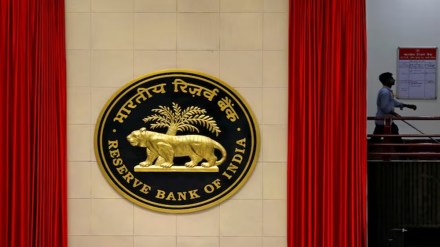With the Reserve Bank of India’s (RBI) Monetary Policy Committee (MPC) meeting entering its second day of deliberations, economists said that the central bank is expected to cut policy rates by 25 bps. Gaura Sengupta, Chief Economist, IDFC FIRST Bank, said, “We continue to expect RBI to cut policy rates by 25bps in the April policy. There is speculation that RBI should frontload rate cuts with a 50bps cut in April but that may be too premature given ongoing bilateral trade negotiations. Moreover, thanks to the substantial liquidity infusion by the RBI overnight rates are below the repo rate. The TREPS rate has been below the repo rate since March 2025 onwards and is averaging at 5.73 per cent in the first week of April. This removes the need to frontload rate cuts in April policy.”
The RBI MPC is conducting its three-day policy meeting currently against the backdrop of external economic challenges like reciprocal tariffs and US recession risks, moderating inflation, and proposed changes in liquidity management. RBI Governor Sanjay Malhotra will announce the decision on the key interest rate tomorrow (April 9). This marks the central bank’s first meeting for the financial year 2025-26 (FY26). In the previous meeting (February), the MPC had slashed the repo rate by 25 bps to 6.25 per cent, which was the first cut since May 2020 and first revision after two-and-a-half years.
A rate cut amidst US tariff, other uncertainties
On April 2, US President Donald Trump announced reciprocal tariffs on its trading partners, which were much more stringent than expected and ‘definitely not reciprocal in nature’, has threatened world trade and global growth. With this, the US markets are now pricing-in more than 100bps Fed rate cuts in 2025. So, will the RBI take proactive action and safeguard domestic growth or will it continue with gradual pace of monetary policy easing?
“Given the highly fluid situation on the tariff front, RBI might want to take a measured approach and wait for clarity. Several countries including India are in bilateral negotiations with the US and there is a possibility of an agreement being reached. The latter will reduce the downside risk to growth. Another key unknown is how the Fed will react to a stagflationary environment. The tariffs have increased downside risk to US growth with the possibility of a recession, but it has also increased upside risk to inflation,” Gaura Sengupta said. Against this backdrop, IDFC First Bank continues to expect RBI to cut policy rates by 25bps in the April policy.
JM Financial added, “The heightened global uncertainty and its likely impact on domestic growth, inflation and the currency will weigh heavily on the minds of RBI MPC members, and Trump’s tariffs will capture major mindshare as they evaluate appropriate policy responses.” The brokerage firm penciled in a 25bps rate cut on 9th April.
GDP growth forecast
The trade wars have increased downside risk to India’s GDP growth. “We estimate a first round impact of -50bps on real GDP growth. There could be second round effects due to overall slowdown in global GDP growth and volatile financial conditions,” the analysis report by IDFC First Bank said, while maintaining that the central bank may not change its FY26 GDP estimate of 6.7 per cent as negotiations continue between India and the US. “Even without the tariff impact, our FY26 GDP estimate was lower at 6.5 per cent,” it added.
Inflation estimates
On the inflation front, IDFC First Bank said, the March 2025 CPI inflation estimate is tracking at 3.4 per cent, with continued decline in vegetable prices albeit at a more moderate pace. “FY25 CPI inflation is tracking at 4.6 per cent v/s RBI estimate of 4.8 per cent. We see downside risk to RBI’s FY26 CPI inflation estimate of 4.2 per cent. Our inflation estimate is tracking at 3.5 per cent with sharp reduction in food inflation pressures,” it said while adding that tariffs will have a downside impact on India’s inflation.
Furthermore, market worries on global growth have resulted in sharp decline in crude oil prices, which further give comfort on the inflation front. The Centre has hiked excise duties on petrol and diesel, which will shore-up tax revenue. “Consumer prices could remain unchanged as there is enough buffer between domestic retail prices and global crude oil prices. Note retail fuel prices have not been changed since mid 2022. LPG prices will be increased by Rs 50 per cylinder which will add 8bps to headline inflation,” it said.
Liquidity to remain key focus
The substantial liquidity infusion by the RBI has transformed domestic liquidity conditions. RBI has already infused Rs 6.4 trillion of durable liquidity over December 2024 till April 2025 and will infuse another Rs 600 billion in the remainder of April. The next significant infusion will come from the RBI dividend in May 2025 which is expected to be Rs 2.6 trillion, IDFC First Bank said.
“For the full year FY26, we expect a durable liquidity infusion of Rs 3 trillion to Rs 4 trillion to ensure system liquidity surplus is 1 per cent of NDTL. The infusion is expected to be via OMO purchase and USDINR buy-sell swaps. RBI has already announced OMO purchase of Rs 800 billion to be conducted in April,” it said.
